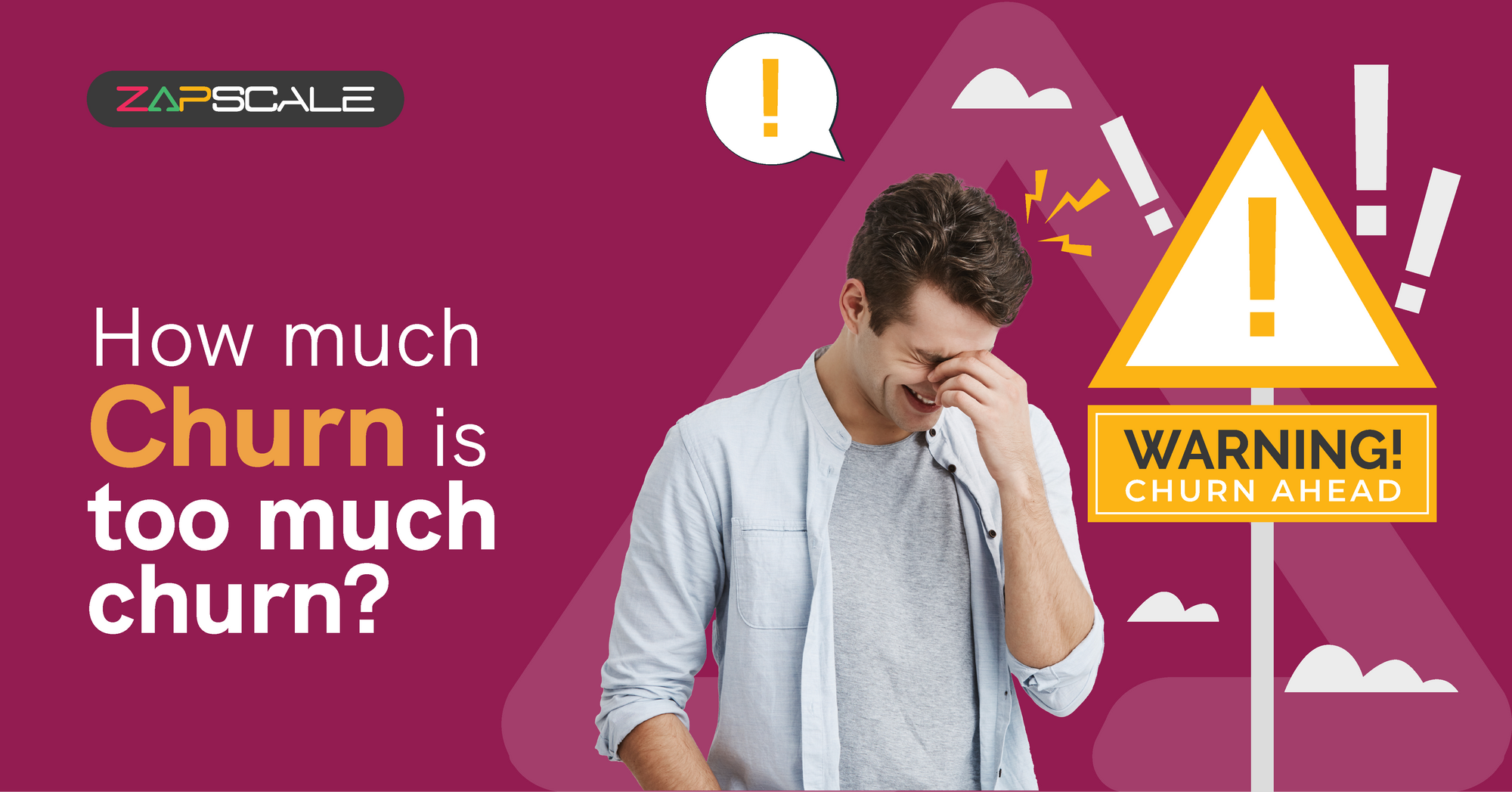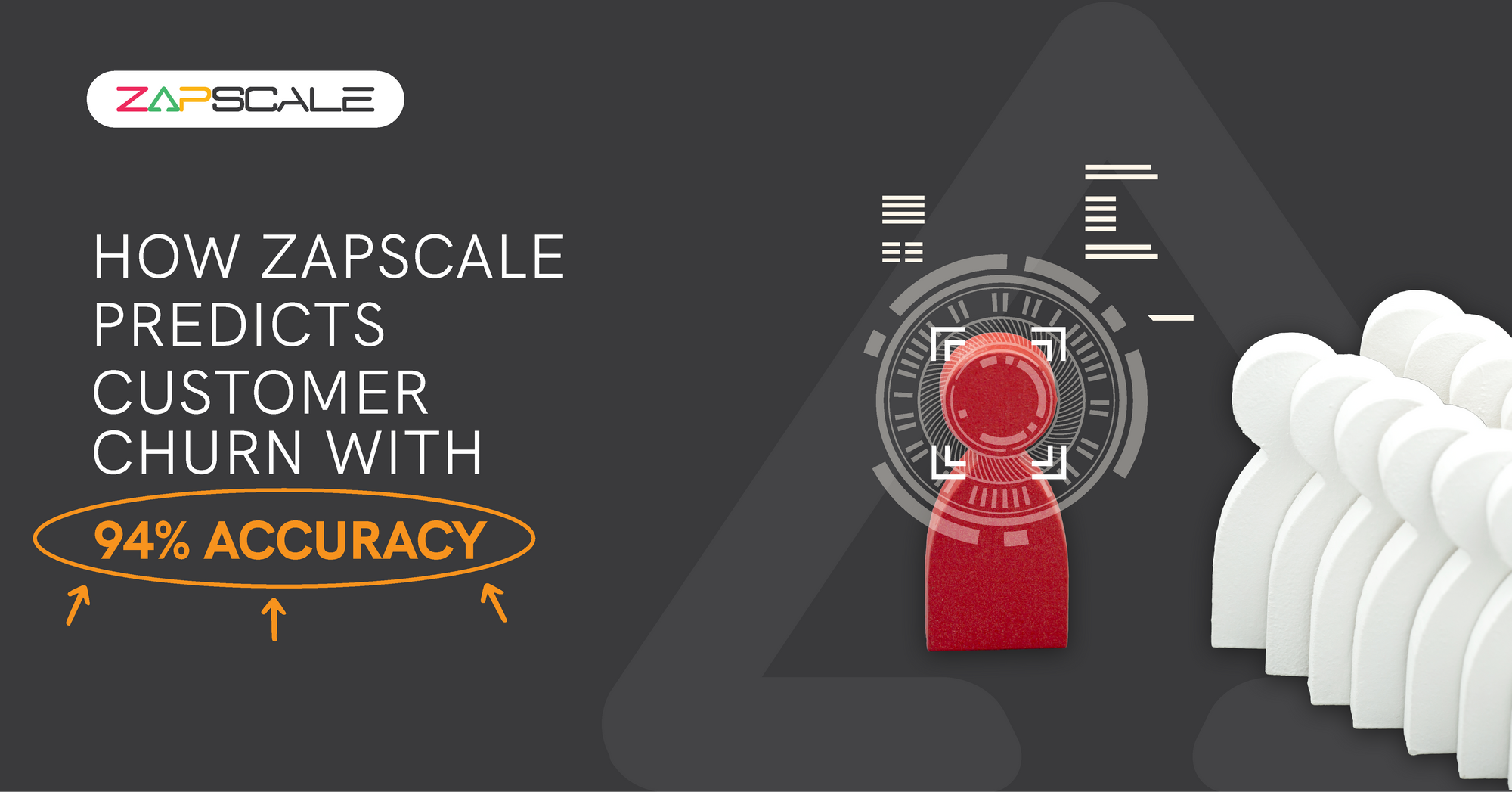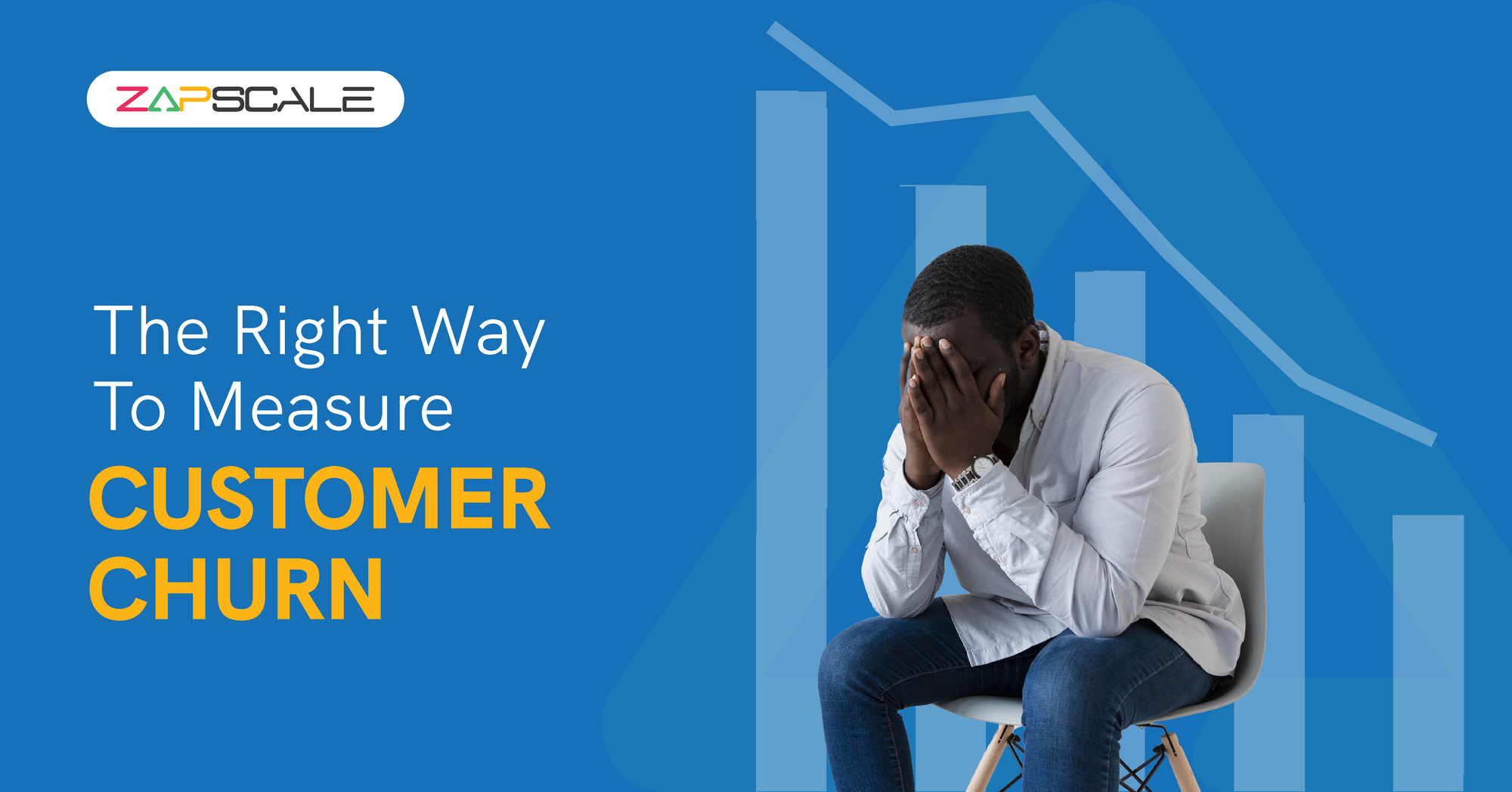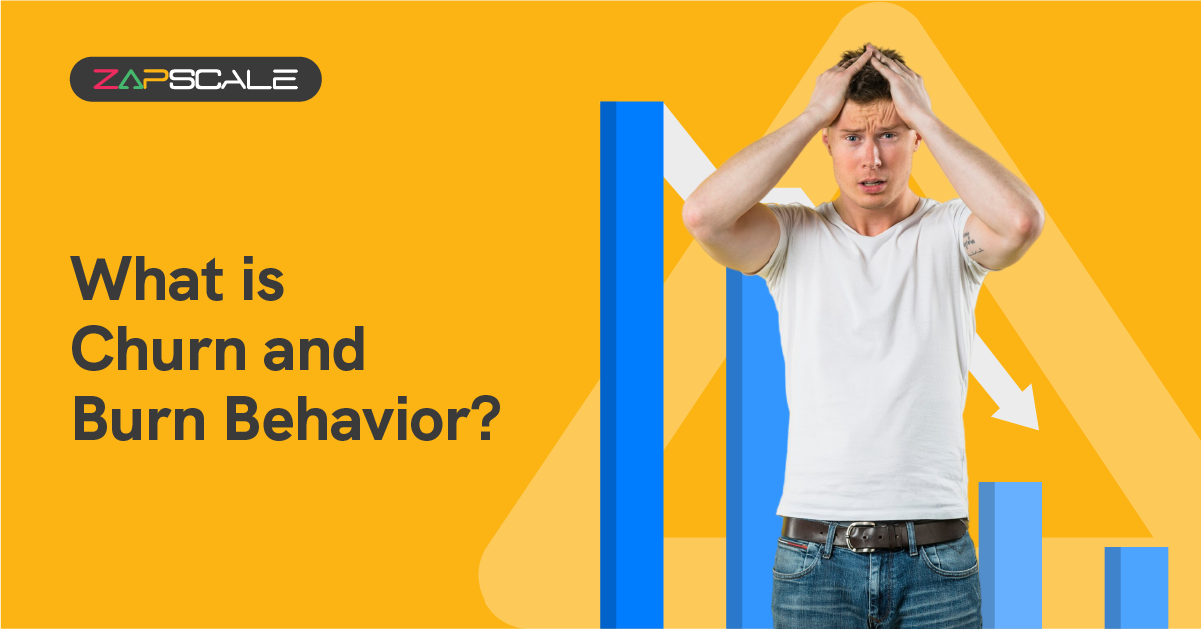CATEGORY > Customer Churn
The Ultimate Guide To Keeping Your Customer Churn in Check!
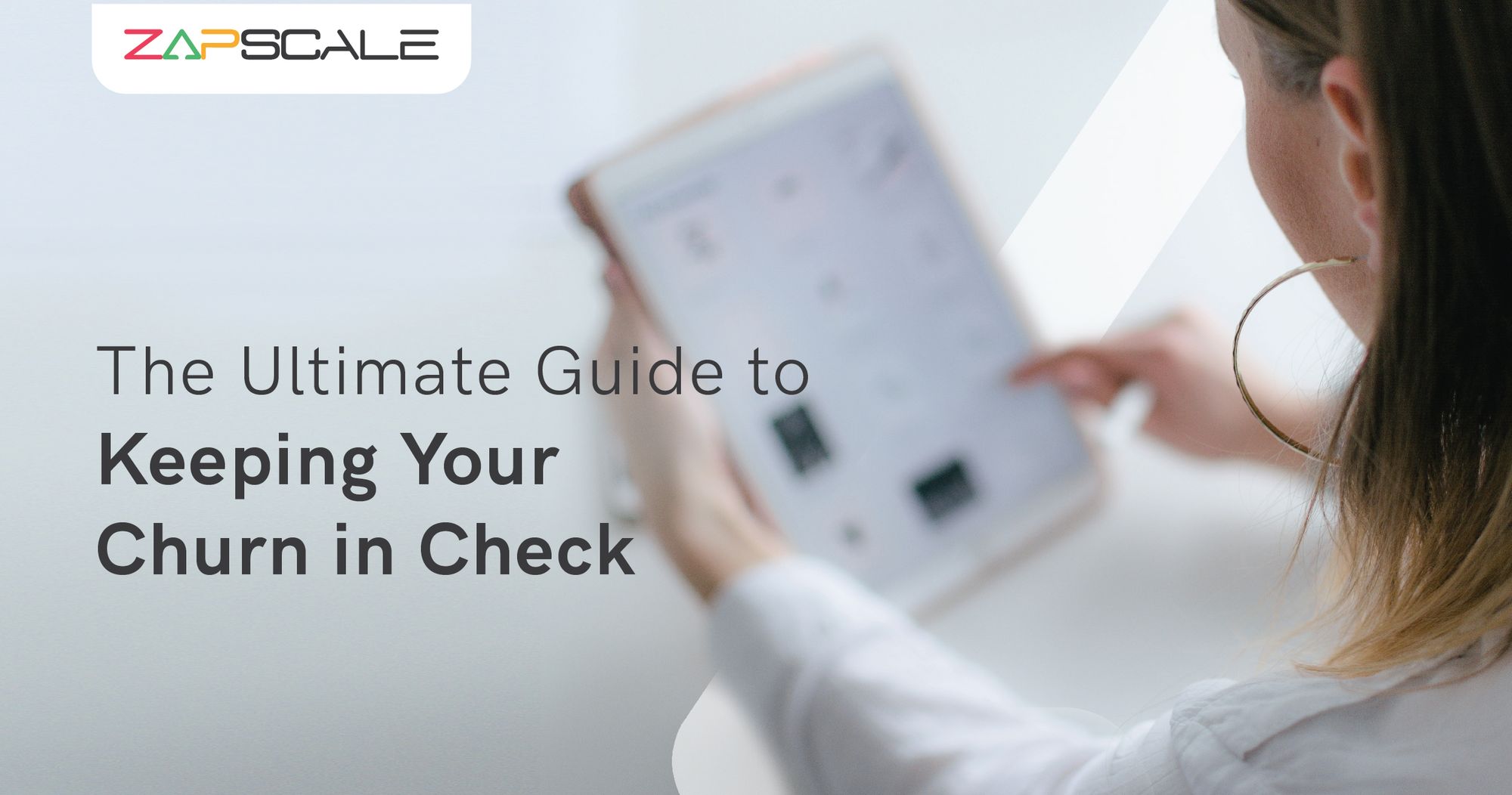
Defining what churn for your product means?
They say not all churn is bad. What do you think? I think so too, but don’t take my word for it. Some say all churn is bad and I’d give that to them but not take it personally! I mean yes, it reflects your product capabilities, but it is not the ONLY factor that has a part to play in the churn process.
Defining what churn means for you then becomes of utmost importance. Because when a customer churns, it is a problem - either at their end or at yours. And guess what? One of them is in your control. So, let’s try and look at churn from the lens of activities that we can undertake as the maximum input to drive maximum output.
Churn measures how many customers stopped using your product or failed to renew. This can be monthly, quarterly, or annually based on your business model.
And then, to understand if you are keeping your churn in check is if you have your basics right!
Revenue Churn Vs. Account Churn
Identify what’s more important for you and separate activation from retention!
You may be losing customers, then again, are you keeping an eye out on what type of customers are you losing? If the accounts are only using resources and not growing with you, do you have an infrastructure to maintain them, or it may just be better for you to let go of them?
If the accounts are dormant and aren’t adding value to your portfolio - either from a logo perspective or a revenue angle, do you really want them?
And then, do not forget to separate activation from retention. Sales might have closed in on a deal to get in their numbers, but is the account even activated at the right time for them to make the most of it? Business goals and structures change all the time and there might come a time that the pieces of this puzzle no longer fit. What do you do then? Well, I am in the same boat as you are, figuring this out together.
I am just guiding you to think in the direction that will help you understand churn better, which helped me get to articulate this point.
Identify the churn killers
This chart by Lincoln Murphy helps us identify churn to its core and do what’s needed to be done, honestly, it isn’t rocket science. It’s just about identifying the red flags not as a carnival but as a sign of caution.
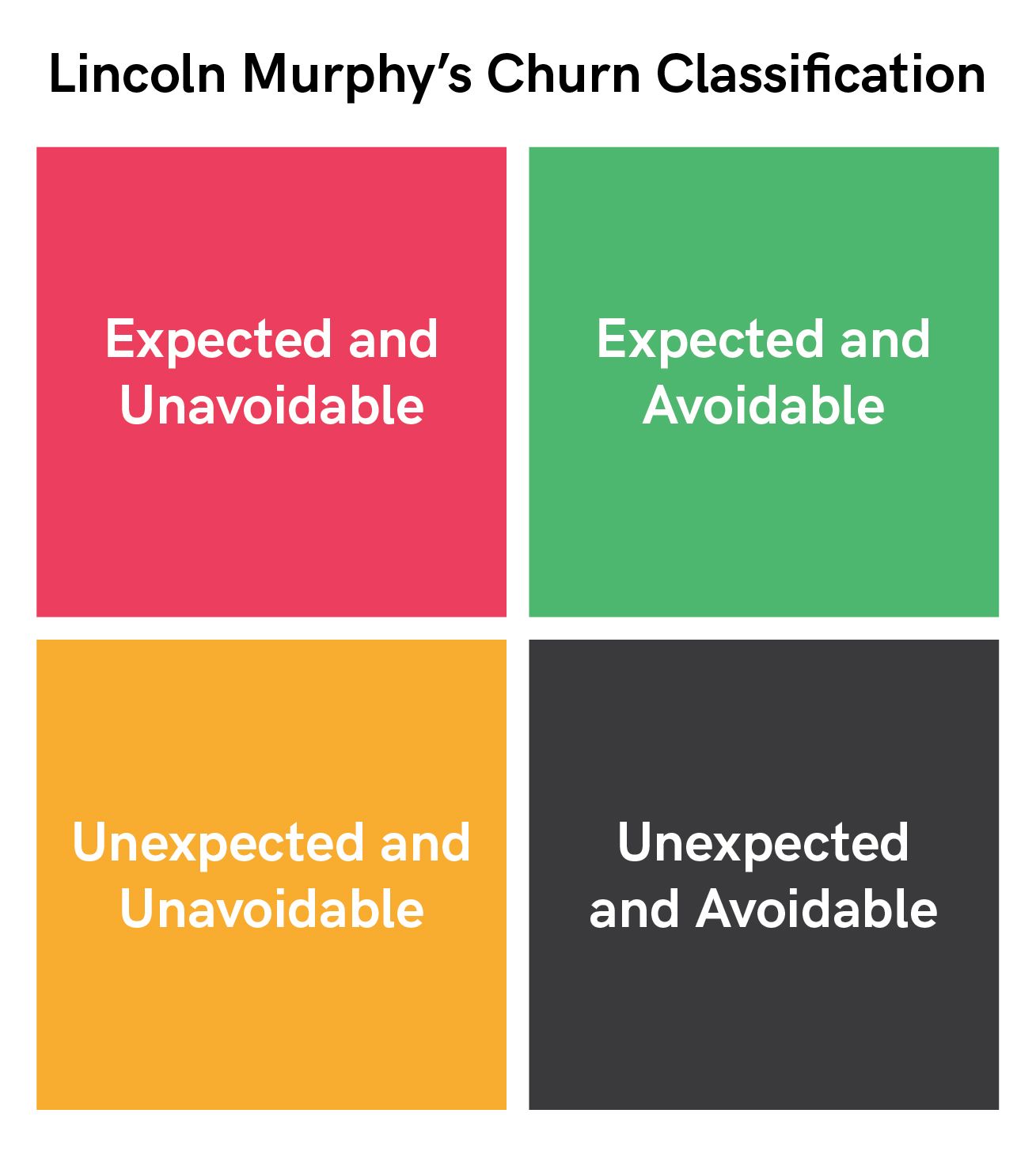
Expected versus Unexpected - you saw it coming for whatever reasons versus you had no idea at all! Having no clue is not where you want to be at any point through a customer journey, it means there is a big gap to fill within your team and the client.
Avoidable versus Unavoidable - simply guides us to if the customer was set up for success or not. As simple as that.
How to put the churn killers into action?
For you to identify the above, you need a detailed customer view with comprehensive health tracking of how an account is performing.
Currently, if you don’t have a customer success platform and are operating on an Excel/Spreadsheet or storing data on a CRM, you will find it difficult to create a last-mile solution for reducing churn.
Let me show you how it is done on ZapScale (one of the CSPs available in the market) with its AI-driven churn prediction features:
ZapScale allows you to pick from more than 40 KPIs that align with your CS goals, which helps you build a ZapScore that indicates customer health. These KPIs are powered by data analytics and address the critical aspects that any SaaS product needs, such as:
- Product Usage
- Product Use-Case outcomes
- Ticketing app data
- Email app data
- Payment app data
- Upsell data
- Feature request data
- CS team hand feel
- Overall business health
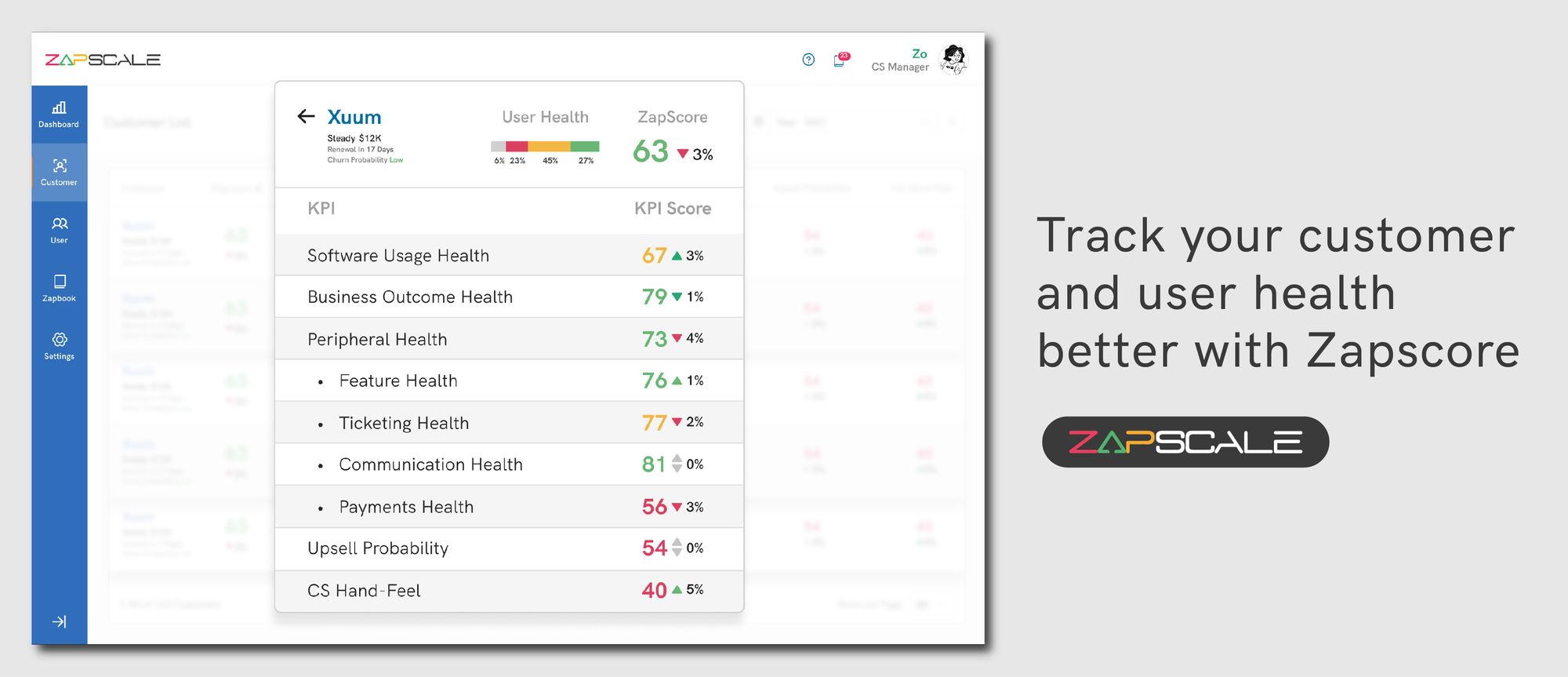
An additional and easy-to-implement feature, such as having a 360-degree view of your key accounts, helps you prevent churn that could happen due to the reasons mentioned above and helps you prepare better.
This gives you a clear indication of the customers’ health and also drives customer expansion/upsell conversations or guides you to take corrective action!
Imagine running around 5 different platforms to understand how your customer is doing. Be it emails, a CRM, a payment app, or even a ticketing app! Did it boggle your mind? I’d get tired of just the thought of doing such an exercise.
ZapScale gives you a unified view of all customer data which is gathered by integrating with all key touchpoints across all applications.
This ensures an airtight ecosystem with minimal data leakages. In this world of fragmented data, what else can we ask for?!
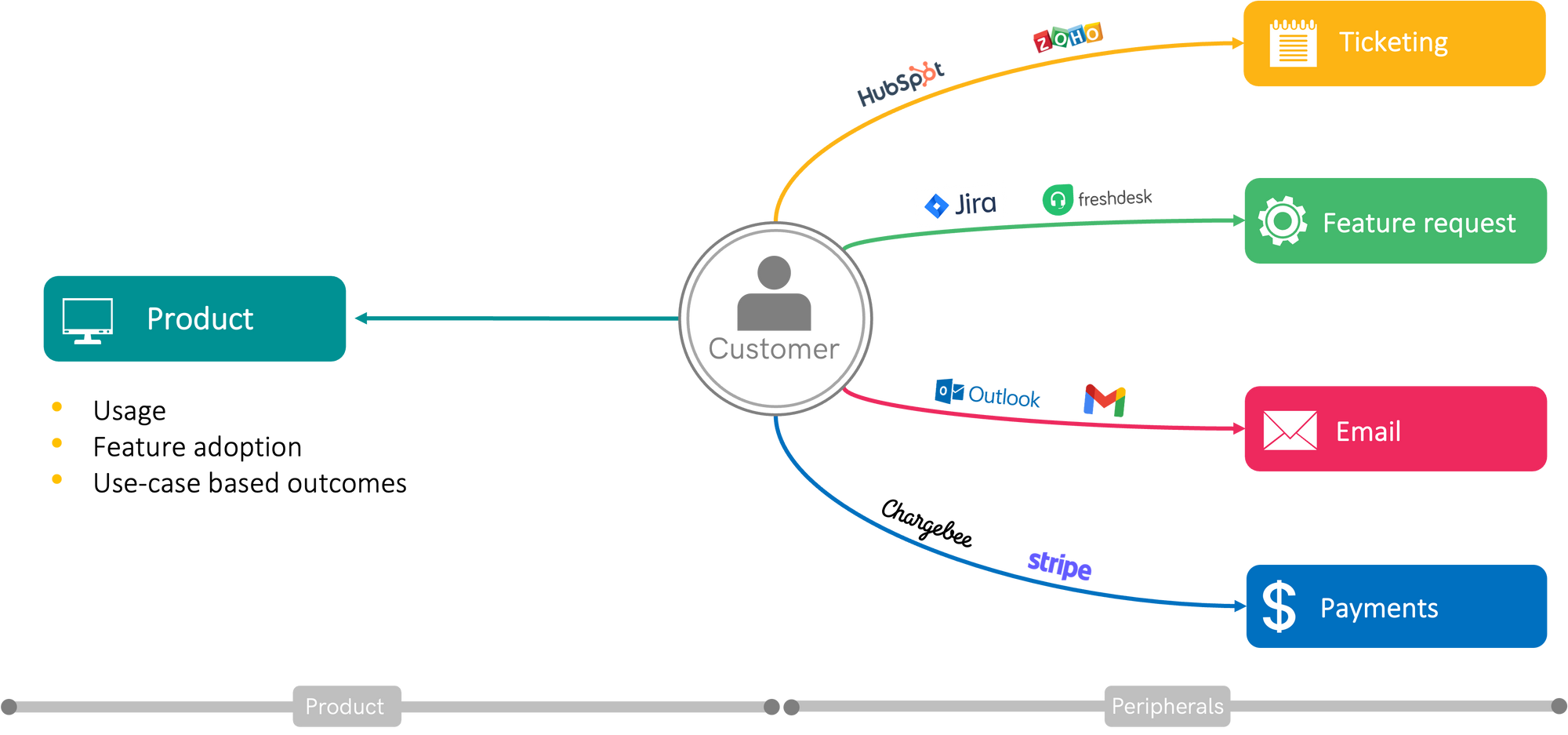
And last but not the least, ZapScale’s 50+ pre-defined playbooks help you set alerts at times that trigger a set of actions, enabling you to take preventive action and avoid expected churn.
These playbooks are built around critical customer data points such as:
✅ When is the right time to have an expansion/upsell conversation?
✅ Is the customer raising too many tickets and not able to use the platform despite having 90% of license utilization?
✅ Why does a particular customer have low product usage?
✅ What is the reason behind delayed payments? Why is the customer not responding?
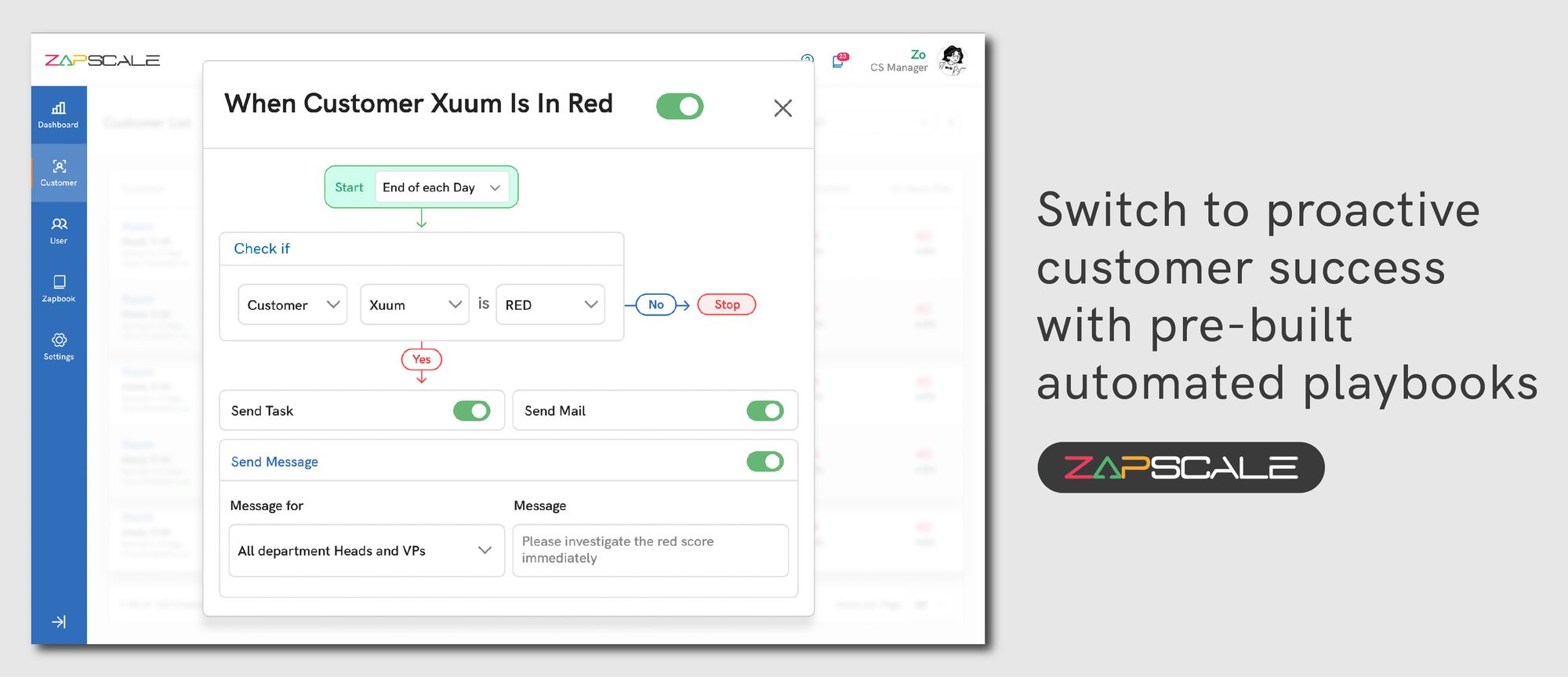
If you are unsure how to set this up for your organization, reach out to us for a free demo and we’d be more than happy to guide you through setting up a CS function that is not just a cost center but also a revenue-driving function for your org.
Now let's look at some of the key metrics you need to measure to see the impact of churn:
We’ve all heard of NRR, margins, and acquisition costs when it comes to working with SaaS products. I’d still like to take a minute for us to briefly touch upon these key metrics:
A. Net Revenue Retention
How much will that client grow or shrink over time?
Is the cumulative total of retained, contracted, and expanded revenue over a set period, typically one month or one year. Net revenue retention calculates total revenue (including expansion revenue) minus revenue churn (contract expirations, cancellations, or downgrades).
NRR measures your ability to retain and expand customers and is considered a qualifying metric to determine the health of a SaaS or subscription-based business.
B. Gross Margin
What is the gross profit you will make on that customer?
Gross margin is the amount of money your business makes after the Cost of Goods Sold (COGS), which includes infrastructure and support costs.
Gross Margin measures the ability of a business to sustain itself if it were to keep selling and expanding more of it.
C. Customer Acquisition Cost
How many Sales and Marketing expenses does it take to get a new client?
In a SaaS company, the Customer Acquisition Costs (CAC) refer to how much your company spent to bring customers on board to buy your software or service. The total cost also includes the sales and marketing spend including personnel and campaign costs.
Apart from all this, just make sure as the interior designer (CSM) of the house (the product), it is a place that your clients never want to leave. Just like a well-built home: a dependable, safe, and productive space.
Reducing churn with keeping the key indicators as a guiding light will help you build a product that’s:
- Sustainable: by keeping your customers happy at all times by measuring their health or ZapScore.
- Reliable: by knowing what action to take via a set process or choosing from 50+ pre-defined playbooks!
- Dynamic: by being plugged in with all your systems and showing you a top-level view of what’s actually going on with your customers!
Churn is inevitable (in most cases), what you choose to do about it and how it impacts you is not!
ABOUT THE AUTHOR
Popular from Customer Churn
Quality Content,
Straight To Your Inbox!
Subscribe for the latest blogs, podcasts, webinars, and events!

Write a Blog
If you have experience in CS and
a flair for writing, we’d love to
feature you.
Write to us on
hello@zapscale.com
